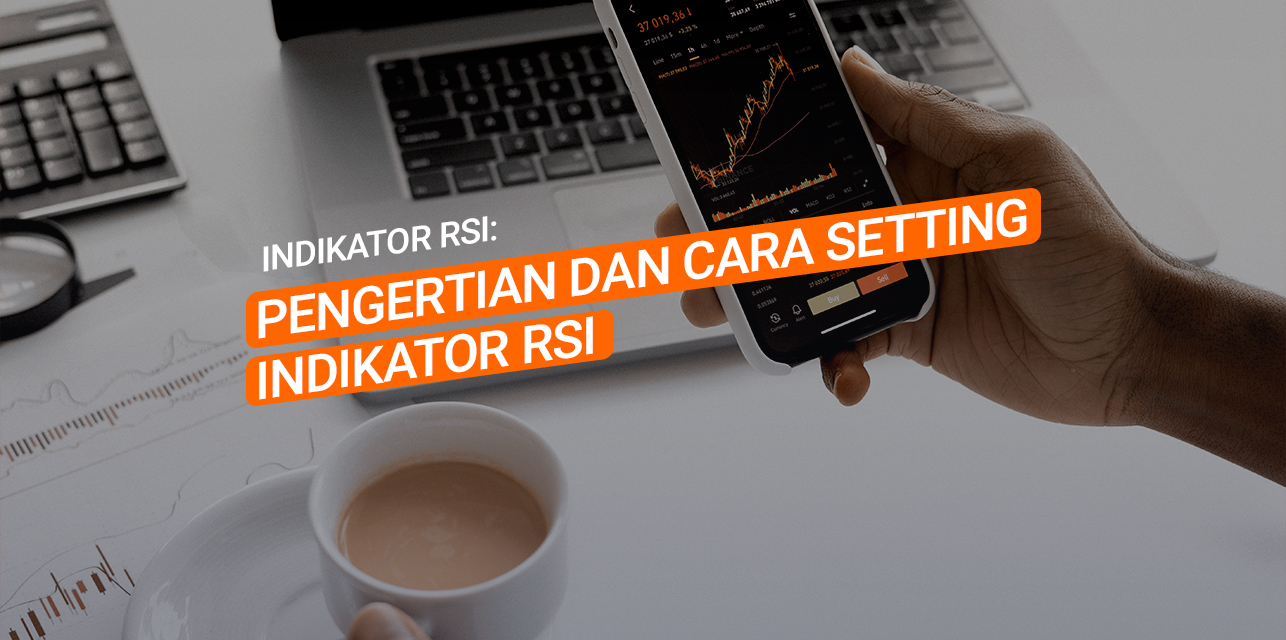Table of Contents
Then, what is the RSI indicator?
RSI stands for relative strength index. What is the saturation point? Oversold and overbought are technical terms used to predict the likelihood of a correction or reversal. Simply put, the saturation point refers to a condition that has reached the highest or lowest point, but within the estimated limit because the saturation point is considered impossible to move higher or lower.
Well, the forex RSI indicator is used to identify oversold and overbought levels for an investment asset and can also be used as a 'signal' of the emergence of trading opportunities. The RSI itself is an oscillator-type technical indicator. This type of indicator oscillates between two boundaries, above and below the midpoint, and its values help to measure the strength and momentum of a trend. Below is a discussion of how the RSI indicator works. However, before traders read it, make sure to check and fill out the GIC Trader Assessment.
How does the RSI indicator work?
On forex trading platforms like Metatrader, the RSI indicator appears in the form of an up-and-down line below the price chart. However, traders do not need to calculate manually, because the RSI can be brought up by simply clicking 'Insert', then selecting 'Indicators', after that selecting 'Oscillators', and selecting 'Relative Strength Index'. This indicator measures the upward and downward movement of the price with a ratio range of 0-100.
If the RSI indicator is at a ratio of 70 or greater, it means that an asset has been overbought, so it is likely that the price will turn down or correct.
For traders, this means time to sell. However, if the RSI value is at a ratio of 30 or smaller, it means that an asset has been oversold, so it is likely that the price will turn up.
For traders, this means time to buy. The RSI calculation by default usually uses a period of 14, but traders can change this RSI period. However, changing the period by increasing or decreasing the period can change the sensitivity.
For example, a 7-day RSI will be more sensitive to price movements compared to a 21-day RSI.
However, it also depends on the volatility of the asset's price. High-volatility pairs such as EUR/USD will get to oversold or overbought levels faster than USD/CHF. Therefore, the use of this indicator should be accompanied by other technical indicators so that the calculation is more accurate.
Also read :
|
RSI Bullish Divergence: Characteristics, Examples, Conditions, and How to Read |
How to set the RSI indicator?
For beginners, using indicators may seem difficult. However, over time, traders have to use indicators or multiple indicators to get more accurate signals. So, if you are a beginner, here's how to set the RSI indicator on the trading platform.1. Go to the 'Chart/Graph Menu'
[caption id="attachment_3265" align="aligncenter" width="1024"]
Charts/Charts Menu on the GIC Demo Account Trading Platform[/caption] First go to the 'Charts/Charts Menu' on your trading platform, then click on 'Insert', select 'Indicators', then 'Oscillators', after that select 'Relative Strength Index'.
2. Changing the setting of the 'RSI Period Parameter' or the indicator's time frame
[caption id="attachment_3266" align="aligncenter" width="1024"]
RSI Indicator Menu on GIC Demo Account[/caption] After the display as above appears, traders can change the RSI period number. The RSI time period created by J. Welles Wilder is 14 days, which according to Wilder is a good standard period for daily chart analysis.
3. Reading the RSI line display
[caption id="attachment_3267" align="aligncenter" width="1024"]
RSI Indicator Display on GIC Demo Account[/caption] The blue line in the image above is the display of the RSI indicator. The RSI as described consists of a line of 0-100. On this indicator, you can see the 'upper boundary' and 'lower boundary' lines.
Forex trading tips using the relative strength index indicator
1. Pay attention to the middle level or center line on the indicator
All oscillator-type indicators such as stochastic indicators, MACD indicators, and including relative strength index indicators, have a middle level or center line which is usually at the 50 or 50% level.
2. Adjust the use of RSI indicator parameters to the trading time frame
The default time period on the trading platform for almost all oscillator-type indicators is 14 including the RSI. The creator of the relative strength index, Welles Wilder recommends using the 14 period on the daily time frame.
So, if you are going to use the RSI on a time frame that is lower or higher than the day trade, it should not be based on the default parameters. Then, how is the adjustment? Basically, the smaller the period setting, the more often trading signals will be generated.
Still having trouble understanding the basic techniques of forex trading?
Don't worry, if you find it difficult to understand the learning material or basic trading techniques, it is not because the forex market cannot be understood. To make it easier for you to become an expert trader, join the trader community on Telegram GIC Forex Academy which will provide trading information and education that is often held by GIC. You can also join the trader community on GICtrade Telegram to ask fellow traders directly about their trading experience.Also follow GIC Instagram to get webinar information and various attractive prizes. In addition, on YouTube GIC, traders can also learn to trade for free! What are you waiting for? Get more features that fully support you to start investing and trading forex through GIC. Make transactions simpler, safer, and more profitable.
 Last:
Last: 







